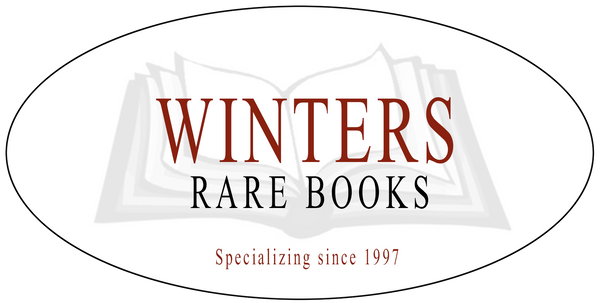Harry Potter and the Philosopher’s Stone
Jan MaliepaardThis article helps to identify the characteristics of valuable English copies of the Trade (Children) edition of Harry Potter and the Philosopher's Stone.
The mentioned copies/print runs and characteristics are rated from ★★★★★ = Very rare to ★☆☆☆☆ = Very common (not rare).
While the first printing of both the hardback and paperback of the English Trade edition is the most sought-after printing among collectors, other early printings may also be collectible due to low production numbers and early distinguishing characteristics.
Understanding these details is essential for identifying and evaluating early copies of this iconic novel.
★★★★★ The very first printing

On June 26, 1997, Bloomsbury published the first edition of Harry Potter and the Philosopher’s Stone in the United Kingdom with an initial first print run of 500 hardcovers and 5,150 paperbacks. The hardcovers were primarily intended for libraries and were therefore issued without dust jackets, a standard practice for library books at the time. Dust jackets were only introduced with the third printing of the hardcover edition.
Of the 500 hardcover copies, approximately 300 were allocated to libraries, while the remaining 200 were sold through bookshops.Both the first printing of the hardcover and the paperback edition can be identified by three characteristics that are unique to the first printing of both editions:

★★★★★ "Wizardry and Witchcraft" on the back cover : From the second printing onward, this phrase was corrected to "Witchcraft and Wizardry."

★★★★★ The misspelling of "Philosopher’s": The word "Philosopher’s" is misspelled as "Philospher’s" on the title page.

★★★★★ The number line on the copyright page: A number line at the bottom of the copyright page includes a sequence from 10 to 1, with "1" indicating the first print run.
★☆☆☆☆ The printer mentioned above the number line. The original first edition, first printing is printed and bound in Great Britain by Clays Ltd. (For recognizing an English first printing, this is only relevant in combination with the aforementioned three characteristics).
★★★★☆ Early collectible printings

The next characteristics are not unique to the first printing but still provide valuable clues for identifying early printings:

★★★★☆ Wendy Cooling’s quote on the front cover: The quote "A terrific read and a stunning first novel" by Wendy Cooling appears on the first two hardcover printings and the first five paperback printings. It was later replaced by a quote from The Sunday Telegraph.

★★★☆☆ The "double 1 Wand" error on page 53: The list of school supplies mistakenly lists "1 Wand" twice. In the English first edition this error is also found in the 8th and 9th hardcover printings and the 23rd and 25th paperback printing. To find out more about the double 1 wand error, please read this article.
Note: This error also appears in most printings of the Canadian edition, as Bloomsbury used the original first printing text also for the Canadian publication but didn't correct it in later printings. The rating for this error in the Canadian edition is therefore only ★☆☆☆☆. The Canadian edition can be distinguished from the original English edition by the copyright page stating it was printed in "Canada," rather than "Great Britain."
Later printings
★☆☆☆☆ The author's full name, "Joanne Rowling," appears on the copyright page: The widespread misconception of a characteristic that many consider rare but is not. This remained in use for over two years across multiple printings of the trade editions of Harry Potter and the Philosopher's Stone and Harry Potter and the Chamber of Secrets and was mid 1999 changed to "J.K. Rowling".
The misunderstanding may have arisen because the name change was implemented during the first print run of Harry Potter and the Prisoner of Azkaban. English copies of this third book in the Harry Potter series printed in Great Britain with "Joanne Rowling" on the copyright page rate ★★★★☆.
★★★☆☆ Missing space between the name of the illustrator, Thomas Taylor, and the year "1997" on the copyright page. This typesetting error can be found in the first five hardcover printings (★★★★☆) and the first 39 paperback printings (★☆☆☆☆)
★☆☆☆☆ The introduction of the Hogwarts crest.

The well-known Hogwarts crest was officially incorporated early 1999 into UK printings, starting from the 8th hardcover printing and the 23th paperback printing. It was Joanne Rowlings own idea to add this to the title pages of the Harry Potter books: In 2013, an extraordinary first-printing hardcover of Harry Potter and the Philosopher's Stone was auctioned by Sotheby’s, featuring a 1997 sketch of the Hogwarts crest drawn by J.K. Rowling on the title page.
Next to the use of the Hogwarts crest several other modifications were made in 1999:
- The missing space after Thomas Taylor's name was corrected.
- The Sunday Telegraph quote was replaced with "Triple Smarties Gold Award Winner."
- The illustration of the young, smoking wizard on the back cover was replaced with an older, white-haired wizard.
Illustrator Thomas Taylor later revealed that he had been given little information when designing the cover. When instructed to create an image of a wizard for the back cover, he used his father as a reference. He was not informed that the illustration was meant to represent Hogwarts' headmaster, Albus Dumbledore. This resulted in an image that did not accurately depict the character. The new illustration by Thomas Taylor with Dumbledore on the back cover was used starting from the 18th hardcover and 40th paperback printing.

View HERE the copies of this title that we currently have in stock
